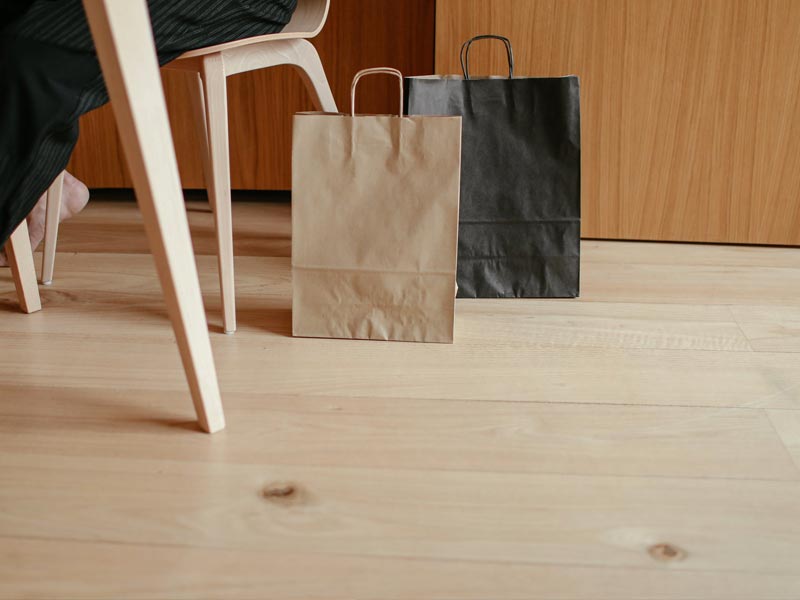Eco Friendly "Green Materials"
No flooring product has zero impact on our planet, but some green materials are better than others. I've listed a few of the eco friendlier options you might use in your home with both the pros and the considerations that need to be pondered.

Bamboo is one eco friendly option. Bamboo is a fast growing grass that can be selectively harvested annually. It is extremely durable and harder than red oak and maple, has 50% less contraction and expansion than wood and is a renewable resource. However, Asian sources require significant embodied energy for transport so that is something to consider. You should also take care to look for bamboo products that have no formaldehyde added. But bamboo is still a great choice over hardwood flooring and can be stained in darker colors than just the blonde color that comes to mind for more traditional looks.

Cork is another eco friendly renewable resource material made out of the bark of the cork oak tree. Only the bark is used so the tree does not have to be cut down. What's great about cork is that it often contains recycled content, is easy to clean if properly sealed and gives great foot support.Just look for products that have no formaldehyde added and avoid cork-vinyl composites. Also consider its origin and remember that transportation requires embodied energy for transport so try to find products sourced as locally as possible.

Rubber is another new eco friendly flooring material available these days. Virgin rubber is derived from rubber trees, a renewable resource; recycled rubber reduces the environmental burden of discarded tires.The down side is that almost all rubber, except virgin rubber, has a significant odor from continual off-gassing and has indoor air quality impact so if you use the recycled rubber instead of the virgin rubber it needs to be used in well ventilated areas. But its benefits are that it uses recycled material, helps reduce landfill, is easy to clean, offers good foot support, is very durable and can be installed without adhesives.

Linoleum uses the same ingredients today as when it was invented in 1863 — linseed oil, cork dust, wood flour, tree resins, ground limestone and pigments, all pressed onto a jute backing. The ingredients are renewable items and often are recycled content, which is good for the planet. Sometimes the linoleum is made to look like hardwood flooring as in the picture below:

Linoleum is durable, easy to clean and offers good foot support. Make sure to look for "natural linoleum." Vinyl flooring is sometimes generically called "linoleum" but is not the same thing.

Stone is another option to consider for the kitchen. It is a natural resource and a very durable material. Stone, however, is a finite resource, can result in using significant embodied energy if the stone is mined or fabricated overseas and, if the stone requires sealing, the sealers can produce potentially harmful VOC emissions.

Look for locally mined and fabricated stone or even reclaimed stone and look for stone that does not have to be sealed.

.png)

.png)
.png)

.png)